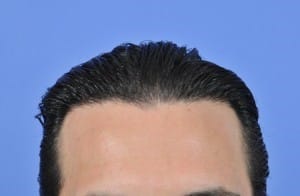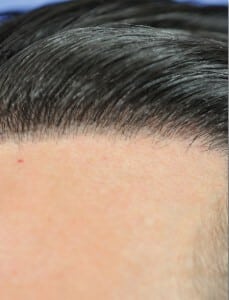 The frontal hairline is arguably the most important area of a hair transplant. Not only is it the most visible portion of a hair transplant, but ultimately defines and frames the face. Tremendous variations exist in facial features, and creating a natural hairline not only requires superb technical skills, but an artistic approach is essential in order to mimic nature as much as possible. It is critically important that the hairline design meet the needs and desires of every patient, but also has a natural and age appropriate appearance.
The frontal hairline is arguably the most important area of a hair transplant. Not only is it the most visible portion of a hair transplant, but ultimately defines and frames the face. Tremendous variations exist in facial features, and creating a natural hairline not only requires superb technical skills, but an artistic approach is essential in order to mimic nature as much as possible. It is critically important that the hairline design meet the needs and desires of every patient, but also has a natural and age appropriate appearance.
Hairline designs differ from patient to patient based on many factors, including the patient’s sex, physical characteristics (facial size and shape), hair color/density, ethnicity, and patient’s individual desires. For example, some patients desire a straight hairline, while others would prefer deep frontotemporal recessions because of their specific facial features. Ultimately, the design of the new frontal hairline will be strategically planned after extensive discussions between the patient and Dr. Gabel.
The most important aspect of creating a hairline is to make it appear as natural as possible. This is accomplished first by designing the most appropriate custom hairline for the patient. When meeting with Dr. Gabel, a thorough discussion on hairline design will be done to develop a strategy that both meets the goals of the patient, and makes the best use of the patient’s donor. The hairline should be symmetrical between the left and right sides, but also some irregularity needs to be incorporated, which gives a natural appearance.
From a technical point of view, the hairline is created exclusively utilizing single follicular unit grafts. In the most frontal portion of the hairline, Dr. Gabel picks out the finest single unit grafts, and as the hairline progresses to posteriorly, the thicker single unit follicular grafts are utilized. Additionally, the hairline should not be straight — this is a sign of a bad transplant. The hairline should have irregularities, which are natural.
As the hairline progresses to the middle of the scalp, the density also thickens. Dr. Gabel will employ an artistic flair to the frontal hairline by producing a gradient effect to the hairline where the frontal hairline has less density, and the posterior hairline progressively gets more dense. All of this serves to create the most natural appearance for a hairline restoration.

